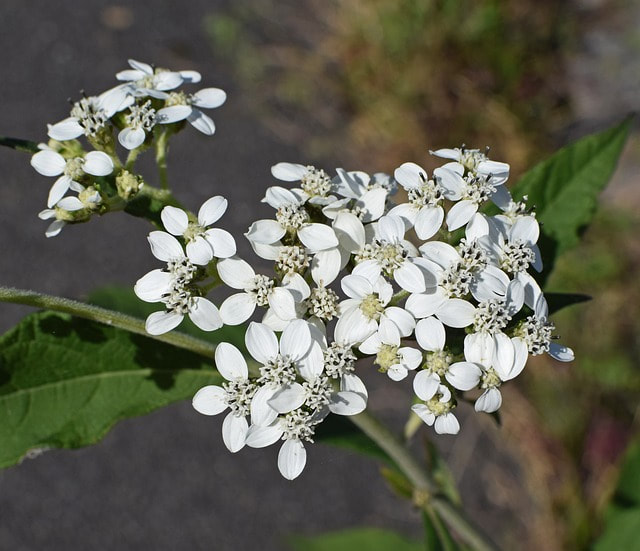The leaves of the bené, commonly called and spelled benny, were used in cases of camp dysentery, of colds, and of coughs.
The bark of the dogwood was substituted "with great advantage" for quinine in the treatment of malaria and typhoid fever.
Thoroughwort or boneset, commonly called grow round, was also found to be "quite sufficient in the management of many of the malarial fevers" which prevailed among the troops during the summer months.
The bark of the tulip-bearing poplar and of the willow were also effective in treating camp fevers.
The inner bark of the sweet gum made into a tea, as well as the green leaves of the tree and of the myrtle and blackberry, easily checked diarrhea.
A decoction of blackberry root checked "profuse diarrheas of any kind."
The bark of the holly root chewed or made into a tea and the leaves of gentian and winter green*** An excess amount of wintergreen (especially wintergreen essential oil) can be very toxic and even fatal to children, please do your research. made into a tea were good tonics.
Wild jalap was an excellent purgative to be used instead of imported jalap and rhubarb.
The boiled roots of swamp dragon furnished "an easily procurable and highly soothing material for poultices--admirably adapted to the wants of large bodies of men in camps, as well as of Negroes on our plantations." Dr. Porcher also advised every planter in the South to grow the opium, mustard, and flaxseed needed for home use.
The bark of the dogwood was substituted "with great advantage" for quinine in the treatment of malaria and typhoid fever.
Thoroughwort or boneset, commonly called grow round, was also found to be "quite sufficient in the management of many of the malarial fevers" which prevailed among the troops during the summer months.
The bark of the tulip-bearing poplar and of the willow were also effective in treating camp fevers.
The inner bark of the sweet gum made into a tea, as well as the green leaves of the tree and of the myrtle and blackberry, easily checked diarrhea.
A decoction of blackberry root checked "profuse diarrheas of any kind."
The bark of the holly root chewed or made into a tea and the leaves of gentian and winter green*** An excess amount of wintergreen (especially wintergreen essential oil) can be very toxic and even fatal to children, please do your research. made into a tea were good tonics.
Wild jalap was an excellent purgative to be used instead of imported jalap and rhubarb.
The boiled roots of swamp dragon furnished "an easily procurable and highly soothing material for poultices--admirably adapted to the wants of large bodies of men in camps, as well as of Negroes on our plantations." Dr. Porcher also advised every planter in the South to grow the opium, mustard, and flaxseed needed for home use.
